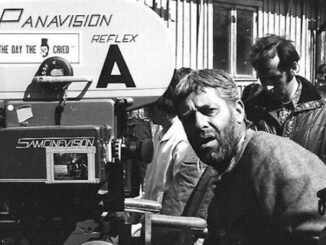Iconic comic actor and filmmaker Jerry Lewis has died at his home in Las Vegas earlier today. Debuting in the post-World War Two nightclub scene as part of a double act with crooner Dean Martin, Lewis soon became known for his high energy, never restrained stage persona, which he leveraged into a film and television career which would span decades. He was 91.
Lewis was born in Newark, NJ on March 16, 1926 to parents who worked on the vaudeville and Catskills circuits. Lewis later stated that being left behind in the care of various relatives and being passing between various homes for stretches of time created an insecurity and need for attention that fueled much of his act. A high school drop out by age 16, Lewis was already performing on stage. In 1946, Lewis met Dean Martin and the two soon concocted a stage act that relied on Martin’s calm cool demeanor holding steady amidst all the Lewis-generated mayhem. Within two years, the pair were headlining the Copacabana night club in New York City.
It was at the Copa that they came to the attention of film producer Hal Wallis. Wallis saw a future in movies for the pair, quickly signing them and installing them in supporting roles in the 1949 comedy My Friend Irma. They followed that up by appearing in the sequel My Friend Irma Goes West the following year.
But Lewis and Martin’s big break came in 1951, when they starred in At War With The Army, a film they did outside of the purview of their contract with Wallis. A hit, the film cemented the formula that would permeate the duo’s following films – the pair’s friendship would be tested by some hard luck but ultimately survive through to the closing credits. The pair would make a baker’s dozen more films, ending their on screen partnership with 1956’s Hollywood Or Bust. Their split was in part fueled by Lewis taking more creative control of their film projects and Martin’s increasing disenchantment with that usurpation.
It was while making the last two of the Martin and Lewis films that Lewis would begin working with a director who would become and influence and a mentor – Frank Tashlin. Tashlin had started as an animator and director for Warner Brothers’ animated shorts and in Lewis he found the live action equivalent of cartoon characters Bugs Bunny and Daffy Duck. Tashlin schooled Lewis on the technical aspects of film making during the production of their collaborations that featured Lewis solo – Rock-a-Bye Baby (1958), The Geisha Boy (1958) and Cinderfella (1960).
It was his next film, and his first effort behind the camera as well, that would mark the start of what film historians and fans label as Lewis’ most creatively fertile period. The Bellboy saw Lewis as the bumbling employee of the Fontainebleau Hotel in Miami Beach. Lewis followed it up with a string of similarly solid hit comedies – The Ladies Man (1961), The Errand Boy (1962), The Nutty Professor (1963) and The Patsy (1964).
However, the mid-60s began to see a change in tastes for the movie-going public and while his wackier comedies still did respectable business, attempts to move into more complex and sophisticated roles were met with little success. By the time his production The Day The Clown Cried – a dramedy set in a Nazi concentration camp – was shelved amidst litigation over the rights to the screenplay in 1972, the public had pretty much moved on from Lewis’ brand of comedy.
Lewis attempted to revive his directing career eight years later with Hardly Working, a fairly undisguised story about an out-of-work clown who has to take a menial job at the post office, which was met with lukewarm reviews and box office. A follow up, Smorgasbord (1983), did not fare any better. Lewis would not direct another film.
While his directorial career over, Lewis found a resurgence in his acting career courtesy of his appearance in Martin Scorsese’s The King Of Comedy (1982). Critical praise for the role led to several appearances on the television series Wiseguy and small character roles in Emir Kusturica’s Arizona Dream (1993) and Peter Chelsom’s Funny Bones (1995).





